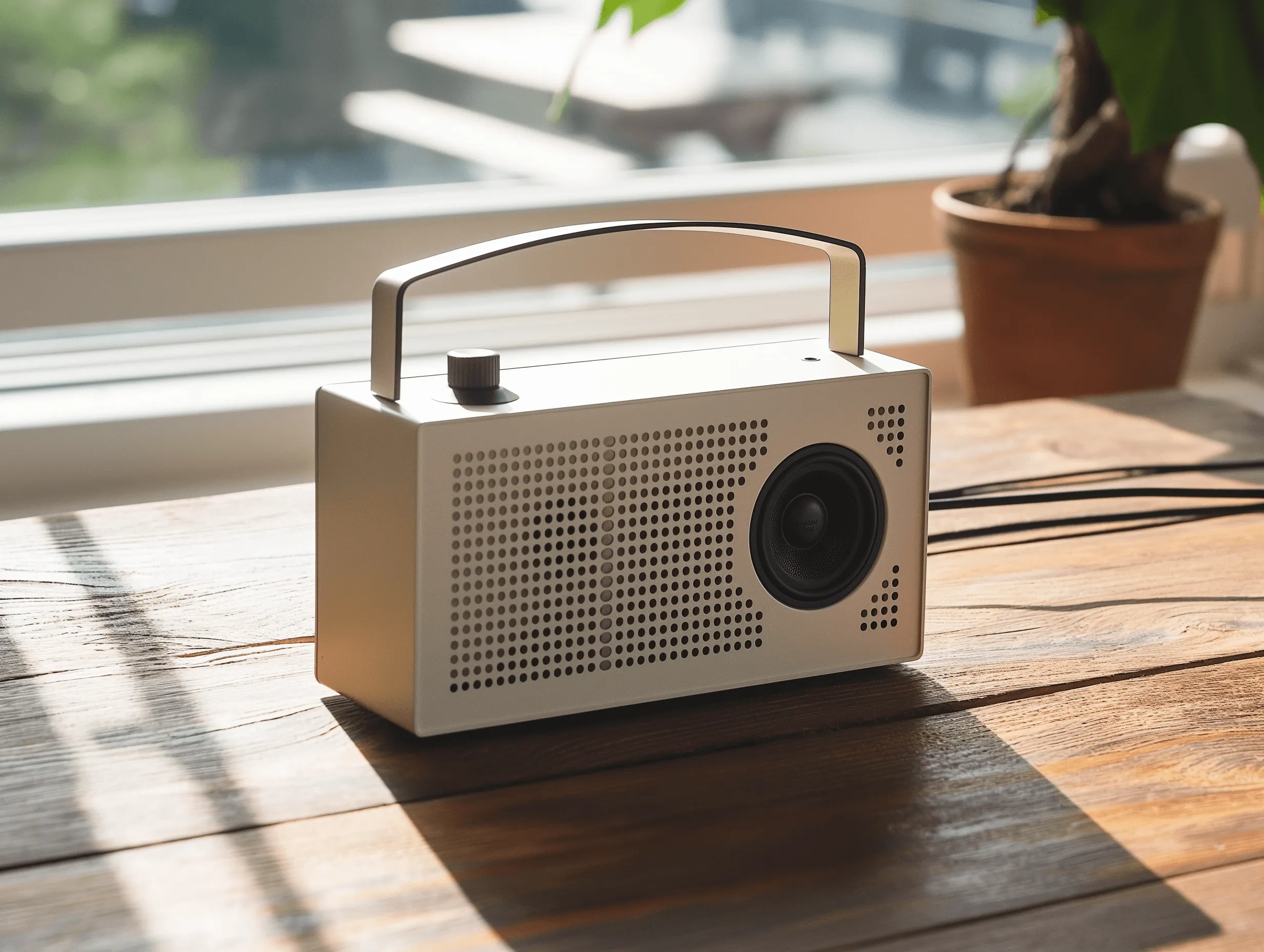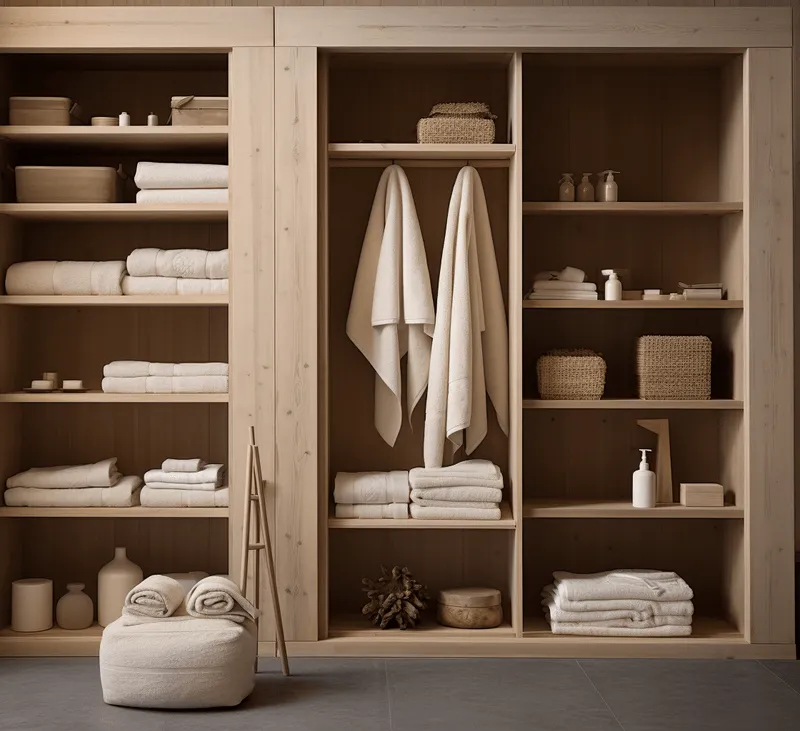
From Wool to WFH: The Evolution of Seasonal Dressing
Picture this: you're scrolling through your closet on a random Tuesday morning, staring at that wool sweater your grandmother knitted and the silk camisole you bought for date nights that never happened. Meanwhile, your partner's working from the kitchen table in yesterday's pajama bottoms and a blazer - because apparently that's what passes for "business casual" in 2024 😅
Here's the thing about seasonal dressing - it's gone through more transformations than a reality TV star's Instagram feed. And tbh, the way we dress for different seasons now has everything to do with how we feel about ourselves, our bodies, and yes, even our intimate lives.
Let me take you on this wild journey from scratchy wool undergarments to working-from-home wardrobes that somehow need to transition from Zoom calls to bedroom activities. Because let's be real, the clothes we wear absolutely affect how we feel about our bodies and our sexuality.
The Great Fabric Revolution: From Scratchy to Sensual
Back in the day - and I'm talking way back - seasonal dressing was purely about survival. Your great-great-grandmother wore wool everything because freezing to death wasn't exactly sexy. Those thick, scratchy fabrics served one purpose: keeping you alive through winter.
But here's what's fascinating - as fabrics evolved, so did our relationship with our bodies. The introduction of synthetic blends in the 1950s wasn't just about convenience. It was about comfort, and comfort leads to confidence, which leads to... well, you know where I'm going with this.
I've noticed that when I wear fabrics that feel good against my skin, I naturally feel more sensual. It's like my body gets permission to enjoy being touched, even if it's just by soft cotton or smooth modal. Dr. Helen Fisher, an anthropologist who studies love and attraction, explains that "tactile sensations directly influence our neurochemistry, affecting everything from mood to arousal."
The shift from purely functional to sensually functional clothing changed everything. Suddenly, seasonal dressing wasn't just about temperature regulation - it became about how we wanted to feel in our own skin.
The Lingerie Liberation: Seasonal Intimates That Actually Work
Can we talk about how revolutionary it is that we now have seasonal lingerie that's actually designed for pleasure? Like, our ancestors were dealing with corsets and bloomers, while we're over here debating whether silk or bamboo feels better during summer heat waves.
The evolution of intimate wear through seasons has been a game-changer for sexual wellness. Winter used to mean layers upon layers of fabric barriers. Now? We've got thermal underwear that's actually cute, moisture-wicking fabrics that keep us comfortable during... *ahem*... more active moments, and seamless designs that don't create awkward lines under our clothes.
What I love about modern seasonal intimate wear is how it considers the whole experience. Summer pieces are designed to be easily removable (hello, magnetic closures!), while winter options focus on warmth without bulk. It's like the fashion industry finally realized that people have sex year-round, not just when it's convenient for clothing design.
The Psychology of Seasonal Seduction
There's actual science behind why certain seasonal fabrics make us feel more attractive. Research from the Kinsey Institute shows that texture plays a significant role in arousal and attraction. Smooth, soft fabrics trigger positive sensory responses that can enhance intimacy.
Think about it - in summer, we gravitate toward silk, cotton, and breathable fabrics that feel good against heated skin. In winter, we want cashmere, fleece, and materials that invite touch and cuddling. Our seasonal clothing choices are basically an extension of our desire for physical comfort and connection.
The WFH Revolution: When Home Becomes Everything
And then 2020 happened, and suddenly we're all fashion experts in the art of "professional on top, party on the bottom." Working from home completely revolutionized seasonal dressing because now our clothes need to multitask harder than a single parent on a Tuesday morning.
Your outfit needs to work for morning meetings, afternoon grocery runs, evening dinner prep, and potentially some intimate time with your partner - all without a costume change. Talk about pressure! The WFH wardrobe evolution has been wild to witness.
I used to think seasonal dressing was about looking appropriate for the weather. Now it's about feeling comfortable in my own space while still maintaining some connection to the outside world. And honestly? Sometimes that means wearing a silk camisole under a cardigan because it makes me feel put-together and sensual, even if I'm just talking to my laptop screen.
The Comfort-Confidence Connection
What's interesting is how WFH dressing has made us more aware of what actually makes us feel good. Without the pressure of office dress codes, we've discovered that comfort and confidence aren't mutually exclusive. In fact, they're pretty much best friends.
Dr. Karen Pine, a fashion psychologist, notes that "when we dress in clothes that feel good against our skin, we're more likely to feel positive about our bodies and more open to intimate experiences." Basically, your comfy home wardrobe might actually be improving your sex life. Who knew?
The seasonal aspect becomes even more important at home because we're in these clothes for longer periods. Summer WFH outfits need to breathe and move with us. Winter ones need to keep us cozy without making us feel frumpy. It's a delicate balance between comfort and maintaining some sense of our sexual selves.
Seasonal Mood and Intimate Wellness
Let's get real about something - seasonal changes affect our libido and intimate wellness in major ways. And our clothing choices either support or hinder these natural fluctuations.
In winter, many people experience decreased energy and mood changes. Heavy, restrictive clothing can make this worse by creating physical barriers to intimacy and self-touch. But thoughtful seasonal dressing - like wearing soft, touchable fabrics and clothes that are easy to remove - can actually counteract some of these effects.
Summer brings its own challenges. Heat can increase irritability and discomfort, but it also means more skin exposure and lighter fabrics that can enhance sensuality. The key is choosing materials that work with your body's natural responses to seasonal changes.
The Vitamin D Factor
Here's something most people don't consider - seasonal dressing affects how much vitamin D we get, which directly impacts our mood and libido. Research from Boston University shows that vitamin D deficiency is linked to decreased sexual satisfaction in both men and women.
Modern seasonal dressing has evolved to include more strategic skin exposure - think off-shoulder tops, crop tops, and shorter sleeves that let us soak up some rays while still being weather-appropriate. It's like our clothes are finally working with our biology instead of against it.
The Future of Seasonal Intimate Dressing
So where are we headed with all this? The future of seasonal dressing is looking pretty exciting, especially for those of us who care about intimate wellness and sexual health.
Smart fabrics are already hitting the market - materials that adjust their temperature based on your body heat, moisture-wicking underwear that prevents yeast infections, and even fabrics infused with mood-boosting scents. It's like science fiction, but for your underwear drawer.
The sustainability movement is also changing how we approach seasonal wardrobes. Instead of buying completely new clothes for each season, we're learning to layer and transition pieces. This means investing in high-quality basics that feel good against your skin year-round.
Technology Meets Intimacy
Wearable technology is getting more intimate too. We're seeing the development of clothing that can monitor hormonal changes, track menstrual cycles, and even detect early signs of infections. Imagine seasonal underwear that adjusts its fabric properties based on where you are in your cycle - we're not far from that reality.
But here's what I find most exciting - the conversation around seasonal dressing is becoming more inclusive and body-positive. We're moving away from the idea that certain body types can only wear certain things in certain seasons. Everyone deserves to feel comfortable and sexy in their seasonal wardrobe, regardless of size, age, or ability.
Frequently Asked Questions About Seasonal Intimate Dressing
How do I choose fabrics that support intimate health throughout the seasons?
Focus on breathable, natural fibers like cotton, bamboo, and modal for underwear year-round. In summer, prioritize moisture-wicking properties. In winter, look for fabrics that insulate without trapping moisture. Avoid synthetic materials in intimate areas during warmer months.
What's the best way to transition my intimate wardrobe between seasons?
Build a capsule collection of versatile pieces that work across seasons. Think silk camisoles that layer under sweaters in winter and work alone in summer, or modal underwear that's comfortable year-round. Focus on quality over quantity.
How does seasonal clothing affect libido and sexual wellness?
Clothing that feels good against your skin and makes you feel confident can positively impact libido. Restrictive or uncomfortable seasonal wear can create physical and psychological barriers to intimacy. Choose clothes that make you feel attractive and comfortable in your own body.
Can working from home seasonal dressing still be sexy?
Absolutely! WFH dressing is about finding pieces that make you feel good all day. Try silk pajama sets, soft knit dresses, or comfortable lingerie under cozy cardigans. The key is choosing items that boost your confidence and comfort simultaneously.
What seasonal dressing mistakes harm intimate wellness?
Wearing non-breathable synthetic underwear in summer, choosing overly tight clothing that restricts circulation, or wearing the same heavy fabrics year-round without considering your body's changing needs. Also, neglecting to wash seasonal items properly, which can lead to bacterial growth.
Bottom Line: Your Seasonal Wardrobe Should Make You Feel Amazing
The evolution from wool to WFH has been about so much more than just fashion trends. It's been about recognizing that what we wear affects how we feel about our bodies, our sexuality, and our overall wellness.
Whether you're bundled up in cashmere or lounging in bamboo pajamas, your seasonal wardrobe should support your physical comfort and emotional confidence. Because when you feel good in your clothes, you feel good in your skin - and that energy radiates into every aspect of your life, including your intimate relationships.
The best part? We're still evolving. The future of seasonal dressing looks brighter, more inclusive, and more focused on actual human needs rather than arbitrary fashion rules. And honestly, it's about time our clothes started working as hard for our wellness as we do 💕
So next time you're getting dressed, remember - you're not just choosing an outfit. You're choosing how you want to feel in your body today. Make it count.
.png)
.jpg)











Comments: